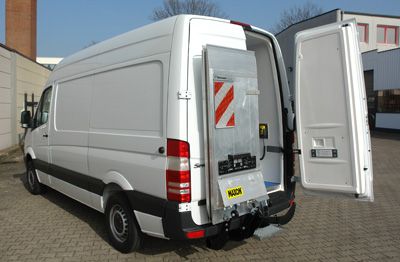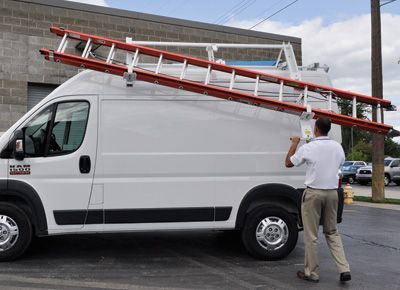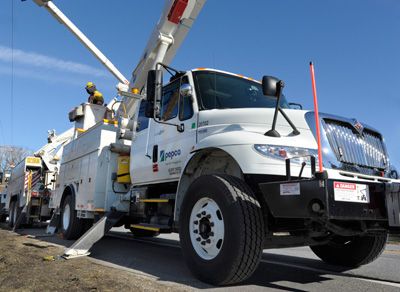The Value of Site-Specific Equipment Plans
Every equipment manager’s budget is impacted by unexpected losses and repairs. If you manage equipment, you know this. You may expect to get 160,000 miles out of that crew truck or 2,000 hours out of a digger derrick before major component replacement, but that’s not going to happen if a line crew drops it off a mountain. I once witnessed the remains of a digger derrick that was lost while being winched up a mountainside for a wilderness construction project. It was unoccupied when the slings attaching it to the D8 crawler dozer failed. At the bottom of the mountain, the winch hook was the only recognizable part. A few years later, I had flashbacks when I heard our construction manager negotiating with our right-of-way clearing manager for the loan of one of their D9s to haul equipment up a mountain. My interest was safety. But in the process of planning for safety, we gained a valuable lesson in equipment preservation. I got involved with pre-planning for mobilization and learned how construction managers planned to perform the project. It was a new line. Right-of-way clearing was being done by another contractor. There were no roads, so access was the challenge. The terrain was very steep at a couple locations.
Prior to the start of the work, I conferred with fleet management. Tow rigging connections are an issue on most equipment. Digger derricks and bucket trucks sometimes come with bumper-mounted factory tow hooks. These bumper hooks are sufficient for getting equipment out of sand if it gets stuck, but they are not necessarily appropriate for a half-mile haul up newly cleared, soft terrain. Fleet asked the truck manufacturer about getting design parameters for the bumper and frame to come up with a modification for towing.
Fleet then selected flatbed chassis derricks and buckets as the lightest for towing and rigged front hooks accordingly. They custom ordered four 60-foot-length 3/4-wire-rope slings for towing calculated at a minimum 3:1 ratio over the trucks’ weights. They also got details on the frame-mounted eyes on the back of the D9 that would be doing the haul up the hill. The last issue was a backup plan, which meant determining in advance what could be done to keep the truck from rolling backward down the hill if something went wrong. Trucks can’t be towed with the brakes on, and we didn’t want a driver in the cab. Fleet came up with a simple but ingenious rig that saved the day.
Training and Backup Plans Matter
As we learned, however, it turns out that the best procedures are only as good as the training that goes along with their implementation. In the scenario described above, somebody didn’t get the part of the plan about rigging to the eyes on the D9. A couple hauls, including the one that failed, were done from the winch cable on the back of the D9. That cable was 5/8-inch plow steel designed for hauling trees – and it had hauled many trees. The good news is, all the fleet planning time was not wasted because the backup plan worked.
An 11-foot-long, 10-inch-by-10-inch square pine beam was rigged behind the rear wheels on each haul. The log was chained to the bed on both sides so that if the truck rolled backward, it would hit the beam and stop. It worked. The winch cable did fail, and the truck being hauled dropped backward against the log and stopped.
The catch-rig story here is not a recommendation for readers. This one worked, but it may not have been effective given a different dirt type or condition, a different wheel size or other variations. With a little imagination, workers might come up with a number of backup plans, such as using safety cables similar to boat trailer chains parallel to the strain rigging. The point here is if the crew had used 3/4 IWRC cable rigged to the eyes on the D9, the haul rigging wouldn’t have failed. That’s the point, and the lesson is two parts: Site-specific planning can prevent loss if not disasters, and training the site crew to the plan is just as important as the plan itself.
Site-Specific Equipment Review
From that event on, I have always planned for site-specific equipment review. It begins with the bid process and a site visit. A couple questions to the project managers reveal the work execution plan. If there are going to be unusual conditions, plan for them. Write a site-specific plan, and then train every crew member on the plan and the procedures to be employed. For example, anybody who has ever worked in the grassy plains of Texas knows you likely will need a fleet of dozers to get your buckets from pole to pole in that soft Texas dirt. If you don’t provide rigging points and a plan, you’ll get equipment back with bent pintle hooks and missing or bent bumpers, or, even worse, broken leaf springs or spring hangers.
There are other benefits of equipment plans. A site visit by a fleet professional can prevent overweight tickets and job delays. For instance, during a site visit in the bid stage in the Midwest, estimators failed to notice local weight limits on roads to the right-of-way. The company I was working for got the job. On the third day of equipment mobilization, state police ticketed a lowboy for being overweight. The patrol hung around to make sure the trucks did not return to those roads. The project was shut down for several days while lighter trucks were delivered and materials were broken down to meet the restrictions. The job had to absorb the cost for mobilizing the original trucks, the lost days and mobilizing the lighter trucks, as well as double material-handling costs. A fleet professional likely would have noted the access issues and prevented the loss.
Site-specific planning also can ensure fuel and maintenance access is appropriate for what you want for your equipment. Crews are going to get the work done no matter what. A job in Georgia went under on fines when the crews used ag-dyed fuel in bucket trucks because they couldn’t get bulk fuel on-site through an unreliable supplier picked by project managers. When the state caught them, they based the fines on fuel purchased and miles that could have been driven. The fines for the nine trucks found with ag-dyed fuel were higher than the profit estimate for the job. In Arizona, crews were stopped by the Department of Transportation when a trooper noticed a bucket truck filling up at an auto-fuel dispenser. That’s not allowed in Arizona and other states for tax-related reasons. This wasn’t news to the fleet manager when he got the call from the Arizona Fuel Tax Evasion Unit, but apparently the crew didn’t know the rules.
Estimators and planners are not the best at planning critical resources for equipment support. But everybody knows your phone number when pressure diggers are down in the middle of nowhere. If you identify resources and lead time for those resources prior to the start of work, you will prevent headaches when the inevitable hose break occurs.
In summary, getting involved with estimating and planning is a good management tool. A little time and planning at the front end keeps you in the loop for what is coming up. It allows you to be sure the right equipment gets to the job, and pre-planning prevents those days of firefighting to solve problems. And not only do planning and training help to prevent issues, but if issues do arise, planning ensures an effective response gets crews and jobs back online quickly.
About the Author: After 25 years as a transmission-distribution lineman and foreman, Jim Vaughn, CUSP, has devoted the last 20 years to safety and training. A noted author, trainer and lecturer, he is a senior consultant for the Institute for Safety in Powerline Construction. He can be reached at jim@ispconline.com.











